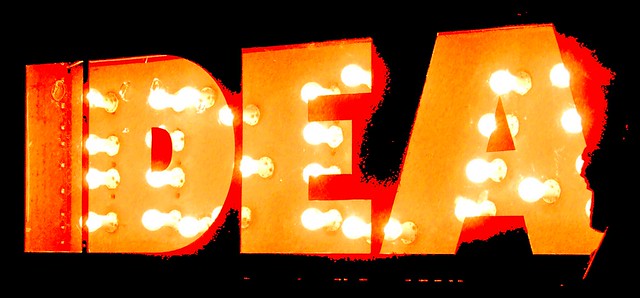That is the cue – “remember, there’s no such thing as a bad idea” – for beginning the sport of suggesting ideas to my fellow brainstormers. However, instead of spurring me to reckless idea generation, it always stops me in my tracks while I re-evaluate the brainstorm facilitator. There is clearly such thing as a bad idea.
Playing in traffic while blindfolded.
Taste testing the contents of the laundry cupboard.
Stripping during a speech to parliament.
Assaulting an armed police officer.
It’s not hard to brainstorm them. So, why begin an exercise with people whose opinions you value by telling them such utter nonsense?
There are good intentions behind it, I admit. Even bad ideas may have the germ of a good idea hidden within them, and maybe one of the other brainstormers can bring that forth. Encouraging people to speak their ideas without thinking about their worth can improve the pace of the brainstorm session. Disruptive ideas can come from those outside of a field, because traditionally such ideas would have been considered “bad” by those inside the field.
On the other hand, perhaps merely being accepting of bad ideas is not going far enough. I’ve found that I can generate many more ideas of much greater variety if I focus on just generating bad ones.
Suggesting ideas in a language you don’t speak.
Brainstorming with just one person in the room.
Miming ideas to the other brainstormers.
Providing the same ideas as from the last brainstorm.
Overall, it is recognised that constraints enable creativity. The restricted forms of the haiku, sonnet or even limerick are able to result in enjoyable poetry. So, it’s understandable that coming up with “any idea, whether good or bad” will result in less creative ideas than coming up with “only bad ideas”.
Still, I don’t know why “only bad ideas” seems to work better for me than “only good ideas”. Maybe it’s simply that there are more bad ideas than good ones? Unfortunately, I can’t see a brainstorm session achieve a useful outcome if everyone involved is aiming for the worst ideas.
So, I’ve had an idea for how to harness the power of bad ideas in brainstorming. At the start of the session, the facilitator gives each brainstormer a note with either Good or Bad on it – which they keep secret from the other brainstormers – and this states the type of ideas they need to suggest. Maybe just a third of the brainstormers are given Bad, since their ideas will otherwise likely outnumber the Good ones.
This should help with improving the volume and diversity of ideas in brainstorms. In this case, the brainstorm facilitator will need to cue the start of the session with something like “Remember, I want to hear your ideas, even if they are bad.”
Tell me if this works for you, since I’m not sure if my idea for better brainstorming is a good or bad one.
Thinking of changes to traditional brainstorming.
Putting those thoughts out in public.
